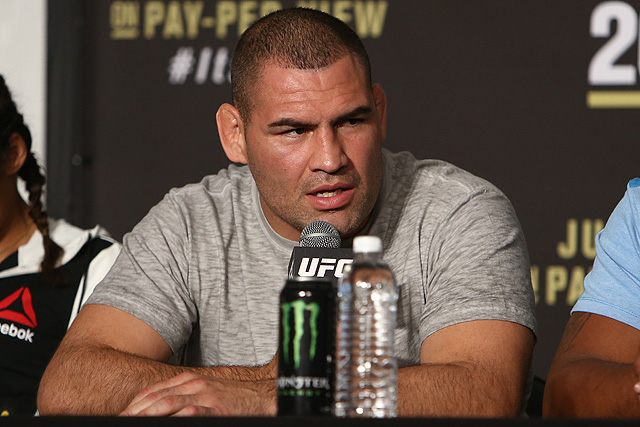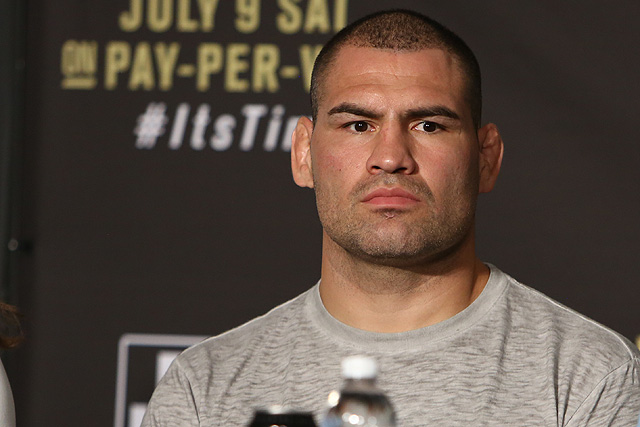With 20 seconds left in the second round of his bout at UFC Fight Night “Rodriguez vs. Caceres” on Saturday in Salt Lake City, an exhausted Chase Sherman bent over and stuck out his tongue. After having some success early in his fight with Justin Ledet, Sherman hit a wall. His offensive output slowed to a crawl, and his lack of movement made him an easy target. As a result, Ledet began picking him apart with boxing, and there was nothing Sherman could do about it. He lacked the energy to respond with consistent offense of his own, so he defiantly stuck out his tongue. It was Sherman’s way of making clear to Ledet: I may be too tired to answer back, but you haven’t taken my spirit.
This isn’t always a crowd-pleasing phenomenon. There is often strong criticism of fights where both fighters are clearly exhausted. Crowds will boo and heckle when the action slows for whatever reason. This has led some to suggest the Ultimate Fighting Championship should avoid holding events at high altitude. I couldn’t disagree more. The high altitude adds drama that events at other locations can’t replicate. It gives us unique insight into the makeup of fighters by adding yet another challenge in a sport that stacks challenges in front of its athletes. It’s a compelling added factor to a fight.
Part of the reason a battle between two exhausted competitors is often frowned upon is because it’s associated with fighters who aren’t in proper shape. It’s frustrating to expend time and money to watch an event, only to discover one of the fighters hasn’t taken the preparation seriously. That’s less common in high-level MMA today, but it still happens from time to time. However, that’s not what’s happening when it comes to high-elevation fights. The fighters aren’t exhausted because they did something wrong. They’re exhausted because they’re supposed to be exhausted. They’re doing something human beings weren’t meant to do.
Humans evolved in lowland environments where oxygen is plentiful. It’s only relatively recently in the species’ history that humans began living in high-altitude regions. We’re not built for extended significant physical exertion in areas where the air is thin and oxygen lacking, just like we’re not built to fight underwater or in the freezing cold. Of course that’s going to lead to exhaustion, particularly with larger fighters.
The fact that these fighters are pushing themselves to the limit is what makes it all the more intriguing when they fight at a location like Salt Lake City. We learn things about fighters when they have no energy left. Character is demonstrated through adversity. It’s a test of mettle that shows fighters with the highest levels of determination and will. Will they continue to push for a finish, or will they abandon that and slow in order conserve energy? Will they look for an out, or will they show a mental desire to keep fighting even when they have no physical ability to do so?
If these sorts of questions feel familiar, it’s because they’re part of the basic appeal of MMA in the first place. Combat sports are as compelling as they are in significant measure because they ask more of their competitors than other sports do. It’s one thing to attempt to prove one’s self a superior athlete to someone else. It’s another to attempt to do so when he’s punching you in the face. The stakes are higher in MMA. Whether you are rocked or weakened or in a terrible position, you must push through it or you will lose. The elevation raises those stakes even higher.
Obviously, only a small percentage of major MMA fights are going to take place at high elevation. There are only so many cities that qualify and will turn out fans for a major MMA event. Fighters for the most part only need to worry about the issue when they are booked for the rare fight in certain cities. Still, those events should be welcomed and celebrated. There isn’t a lot that distinguishes one UFC event from another. From a competitive standpoint, altitude is far and away the biggest difference there is. There is no regularly in play factor that changes the nature of a fight more, nor one that teaches us more about the competitors forced to deal with it.



